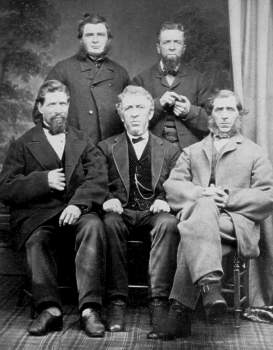 |
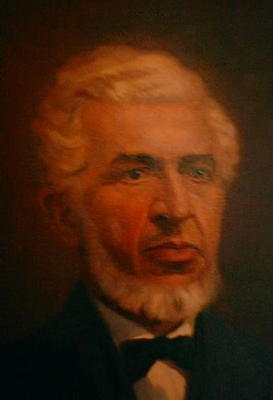 |
George Douglas, centre, with his brothers
left to right: front row -
Alexander Douglas, George Douglas and Donald Douglas. back row - William
Douglas, and John Douglas |
George Douglas |
Son of George and Ginette Douglas
One of 5 brothers, the others reputedly settling in Canada.
He came to Rochester, New York in 1848 and entered the construction
business, concentrating on railroads, bridges and canals.
George Bruce Douglas had a profound influence on the industrial
development of Cedar Rapids. The Douglases had moved to Iowa to invest
their substantial capital in businesses that relied on agriculture and a
well-educated labor force made up largely of German and Czech immigrants
seeking opportunity in America. Working first in his father’s cereal
business, George Bruce Douglas later became a partner of the business his
father co-founded, The Quaker Oats Company. George and his brother Walter
founded Douglas & Company, which originally processed linseed oil. In
1903, the company switched over to processing corn into starch and related
products.
The company flourished, distinguishing itself not only
as a leading industry in Cedar Rapids, but also the largest starch factory
west of the Mississippi. In May of 1919, a grain dust explosion destroyed
most the buildings on the ten-acre site - the worst industrial accident in
Cedar Rapids history.
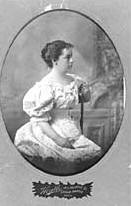 When George Bruce Douglas and his wife Irene
Hazeltine Douglas moved to the mansion in 1906, the estate was renamed
Brucemore; combining George’s middle name with an allusion to the moors of
Scotland. The property grew from 10 to more than 33 acres. Chicago
architect Howard van Doren Shaw, who specialized in North Shore mansions,
oversaw the renovation(which exceeded $30,000). Shaw relocated the
entrance to the south facade and built a terrace on the north side, which
faced the extensive lawn. Inside, butternut paneling and ceiling beams
were added to the great hall. In the 1920s, the Douglases enhanced this
space with a dramatic mural depicting scenes from Richard Wagner’s opera
cycle The Ring of the Nibelung. A Skinner player organ was later installed
with its 678 pipes housed on the third floor. A sleeping porch was
designed and created in 1925 by Grant Wood, a local artist who later
became world renowned for his Regionalist paintings, most notably American
Gothic. These are some examples of the Douglases’ interest in supporting
local artists. Although Mrs. Douglas had access to the arts in larger
cities, she was most interested in promoting regional artists and
craftsmen. When George Bruce Douglas and his wife Irene
Hazeltine Douglas moved to the mansion in 1906, the estate was renamed
Brucemore; combining George’s middle name with an allusion to the moors of
Scotland. The property grew from 10 to more than 33 acres. Chicago
architect Howard van Doren Shaw, who specialized in North Shore mansions,
oversaw the renovation(which exceeded $30,000). Shaw relocated the
entrance to the south facade and built a terrace on the north side, which
faced the extensive lawn. Inside, butternut paneling and ceiling beams
were added to the great hall. In the 1920s, the Douglases enhanced this
space with a dramatic mural depicting scenes from Richard Wagner’s opera
cycle The Ring of the Nibelung. A Skinner player organ was later installed
with its 678 pipes housed on the third floor. A sleeping porch was
designed and created in 1925 by Grant Wood, a local artist who later
became world renowned for his Regionalist paintings, most notably American
Gothic. These are some examples of the Douglases’ interest in supporting
local artists. Although Mrs. Douglas had access to the arts in larger
cities, she was most interested in promoting regional artists and
craftsmen.
George and Irene Douglas took an active part in shaping
their community. George Douglas helped found the Cedar Rapids National
Bank, and served on the boards of St. Luke’s Hospital and First
Presbyterian Church. Irene Douglas was a charter member of the White Cross
Society and the Cedar Rapids Art Association, and helped found the Junior
League. Both were trustees of Coe College.
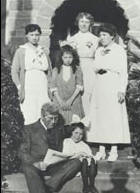 At home, Irene Douglas
was a tolerant mother and Brucemore a generous playground for the
Douglases’ three daughters, Margaret, Ellen, and Barbara. In the early
years, the girls and their friends were tutored in the third-floor
preschool. As they grew older, they enjoyed such treats as roller-skating
in the halls and playing Ping-Pong on the large mahogany dining room
table. Much later, the rugs in the Great Hall would be removed for
dancing. Irene Douglas encouraged her daughters to develop themselves
artistically as well as academically. Margaret, the eldest by twelve
years, was a sculptor, Ellen was a writer and Barbara was a musician. At home, Irene Douglas
was a tolerant mother and Brucemore a generous playground for the
Douglases’ three daughters, Margaret, Ellen, and Barbara. In the early
years, the girls and their friends were tutored in the third-floor
preschool. As they grew older, they enjoyed such treats as roller-skating
in the halls and playing Ping-Pong on the large mahogany dining room
table. Much later, the rugs in the Great Hall would be removed for
dancing. Irene Douglas encouraged her daughters to develop themselves
artistically as well as academically. Margaret, the eldest by twelve
years, was a sculptor, Ellen was a writer and Barbara was a musician.
Irene Douglas was a benefactor of many civic organizations, although
her contributions were often made anonymously. She was one of the six
original donors to Camp Good Health, a summer camp for physically
handicapped children. Though not a member of the Public Heath Nursing
Association, she kept a standing agreement with the association’s board to
provide financial help in emergencies. She helped raise funds to send
several young artists to Europe for study, and opened her home to annual
meetings of the Beethoven Club, the College Club, and the Cedar Rapids
Garden Club. Irene Douglas’ generosity extended even to the gardens she
loved, from which colorful bouquets were sent to families and social clubs
for many years.
Renovation of the Brucemore landscape was largely
complete by 1915. The servants’ duplex was finished circa 1909, followed
by the barn, bookbindery/squash court, and Garden House. The book
bindery/squash court was built in part to accommodate Irene Douglas’ book
binding hobby.
Under the supervision of Chicago landscape
architect, O.C. Simonds, the Douglases added a duck pond, large formal
gardens, and vegetable and cutting gardens. The swimming pool was
installed in 1927. A grass tennis court located in front of the Garden
House provided another recreational option.
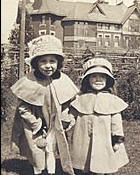 In 1937, fourteen years
after the death of her husband, Irene Douglas died in the house she had
made a home. She bequeathed the Brucemore estate to her eldest daughter,
Margaret Douglas Hall. In 1937, fourteen years
after the death of her husband, Irene Douglas died in the house she had
made a home. She bequeathed the Brucemore estate to her eldest daughter,
Margaret Douglas Hall.
1850-70 - George Douglas followed the westward expansion
of the railroads. In the early 1870's his company contracted with John I.
Blair, railroad financier, to grade, lay track & construct bridges in
western Iowa, eastern Nebraska and Texas.
1874 - George Douglas entered a partnership with Robert Stuart
in the manufacture of oatmeal and other cereal products. This partnership
lasted until George Douglas Sr.'s death in 1884.
The family business, known as North Star Oatmeal Mills,continued to
grow as George Sr.'s three sons took active roles in its operation.
Other Douglas family businesses were a shoe factory, Gates, Gifford and
Douglas headed by Walter, and a cracker factory called Jones and Douglas,
managed by George Sr.'s nephew James Douglas.
1894 The three Douglas brothers formed Douglas &
Company to manufacture linseed oil. This company operated it at 6th St.
& D Ave. in Cedar Rapids, Iowa.
1899 The Douglas & Company was sold to the American
Linseed Company.
1902 George and Walter started building an independent
starch manufacturing company. The company prospered and more than tripled
its production in three years.
Important by-products of the starch making process were gluten feed
used to fatten cattle, and corn oil which was used to manufacture soap in
that era, rather than its present day use as cooking oil and in other food
products.
1905 Walter moved to Minneapolis where he developed interests in
banking and grain processing.
1906 George Bruce Douglas and his wife Irene Hazeltine Douglas
moved to a mansion named Brucemore. The estate was renamed Brucemore
because his middle name was Bruce. The Douglas family hired a Chicago
architect Howard van to make $30,000 worth of renovations on the home.
1912 Misfortune seemed to plague the Douglas family. Walter and
his wife Mahala were touring Europe and
were passengers on the voyage of the Titanic. She survived but he did not.
1918 The Douglas Starchworks was extensively expanded which
added manufacturing capacity and a handsome new office building.
1919 Disaster soon followed. The complex was wracked by a
massive explosion at 6:30 in the evening of May 22nd, and the ensuing fire
left a landscape resembling a war zone.
1919 Following the disaster, stockholders deserted en masse but
George Douglas was able to hold the company together until a Louisiana
company, Penick & Ford Ltd. purchased it in December, and in 1921
it was rebuilt and resumed production.
1923 George B. Douglas died. His wife Irene Douglas, lived in
the family home, Brucemore, until her death in 1937.
George Bruce Douglas had a profound influence on the industrial
development of Cedar Rapids. His companies were early pioneers in moving
corn products from field to table. Today multi-national companies such as
Quaker Oats and Archer Daniels Midland process Iowa products and serve
consumers worldwide through a multi-billion-dollar industry.
Sources:
Cedar Rapids, the Magnificent Century, Harold F. Ewoldt, 1988, Windsor
Publications, Northridge, CA
He was interred in The Douglas Family Crypt at the
Oak Hill Cemetery, which was erected in 1885 in his memory.
The Quaker Oats Company was officially formed in 1901 when several
American pioneers in oat milling came together to incorporate the now
familiar name. In the late 1800s, each of three Midwest milling companies
had independently begun to process and sell high-quality oats for the
consumer--giving the American family a product that would be superior in
quality to the oats sold in open barrels at general stores. In Ravenna,
Ohio, Henry D. Seymour and William Heston had established the Quaker Mill
Company and registered the now famous trademark. In Cedar Rapids, Iowa,
John Stuart, his son Robert and their partner, George Douglas, operated
the largest cereal mill of the time. Ferdinand Schumacher, known as
"The Oatmeal King," founded German Mills American Oatmeal
Company in 1856 after selling oats in his Akron, Ohio, store for two
years. Combining these companies after the turn of the century brought
together the top oats milling expertise in the country and gave the newly
formed corporation a name that--even then--was a symbol of quality and
purity.
- Birth: 17 April 1817, Caithness, Scotland
- Death: 1884, Cedar
Rapids, Iowa
Father: George Douglas, 1772 - 1865
Mother: Ginette Gunn, 1778 - 1854
Marriage 1 ?
3 Children:
- George Bruce Douglas, d1923
- William W. Douglas
- Walter D. Douglas
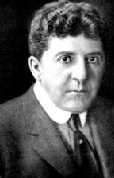
George Bruce Douglas
|
|


